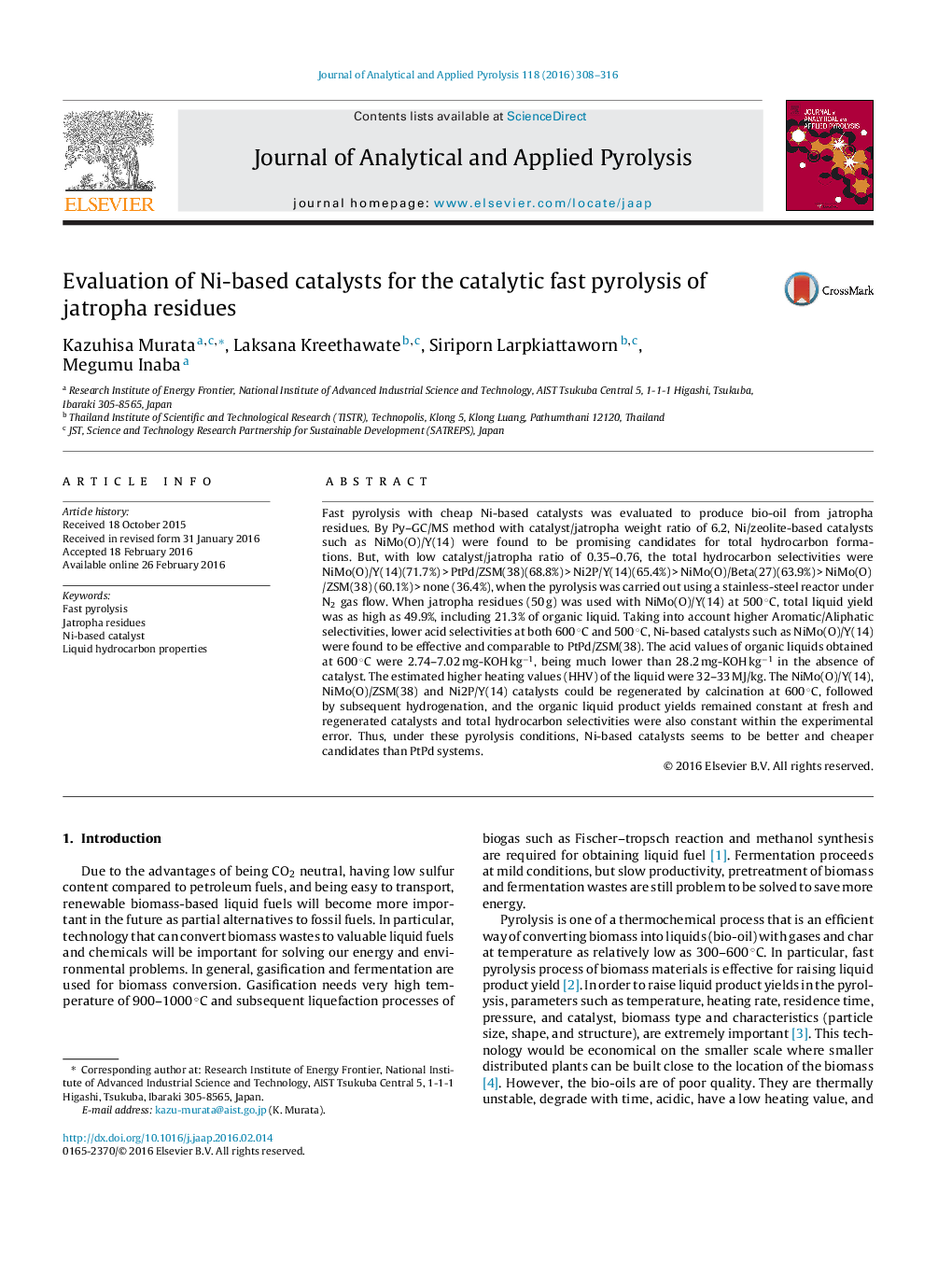| Article ID | Journal | Published Year | Pages | File Type |
|---|---|---|---|---|
| 1198272 | Journal of Analytical and Applied Pyrolysis | 2016 | 9 Pages |
•Renewable green bio-oil with 72% hydrocarbon selectivities can be produced by pyrolysis of jatropha residues.•Ni-based catalysts seems to be better and cheaper candidates than PtPd systems.
Fast pyrolysis with cheap Ni-based catalysts was evaluated to produce bio-oil from jatropha residues. By Py–GC/MS method with catalyst/jatropha weight ratio of 6.2, Ni/zeolite-based catalysts such as NiMo(O)/Y(14) were found to be promising candidates for total hydrocarbon formations. But, with low catalyst/jatropha ratio of 0.35–0.76, the total hydrocarbon selectivities were NiMo(O)/Y(14)(71.7%) > PtPd/ZSM(38)(68.8%) > Ni2P/Y(14)(65.4%) > NiMo(O)/Beta(27)(63.9%) > NiMo(O)/ZSM(38) (60.1%) > none (36.4%), when the pyrolysis was carried out using a stainless-steel reactor under N2 gas flow. When jatropha residues (50 g) was used with NiMo(O)/Y(14) at 500 °C, total liquid yield was as high as 49.9%, including 21.3% of organic liquid. Taking into account higher Aromatic/Aliphatic selectivities, lower acid selectivities at both 600 °C and 500 °C, Ni-based catalysts such as NiMo(O)/Y(14) were found to be effective and comparable to PtPd/ZSM(38). The acid values of organic liquids obtained at 600 °C were 2.74–7.02 mg-KOH kg−1, being much lower than 28.2 mg-KOH kg−1 in the absence of catalyst. The estimated higher heating values (HHV) of the liquid were 32–33 MJ/kg. The NiMo(O)/Y(14), NiMo(O)/ZSM(38) and Ni2P/Y(14) catalysts could be regenerated by calcination at 600 °C, followed by subsequent hydrogenation, and the organic liquid product yields remained constant at fresh and regenerated catalysts and total hydrocarbon selectivities were also constant within the experimental error. Thus, under these pyrolysis conditions, Ni-based catalysts seems to be better and cheaper candidates than PtPd systems.
Graphical abstractFigure optionsDownload full-size imageDownload as PowerPoint slide
